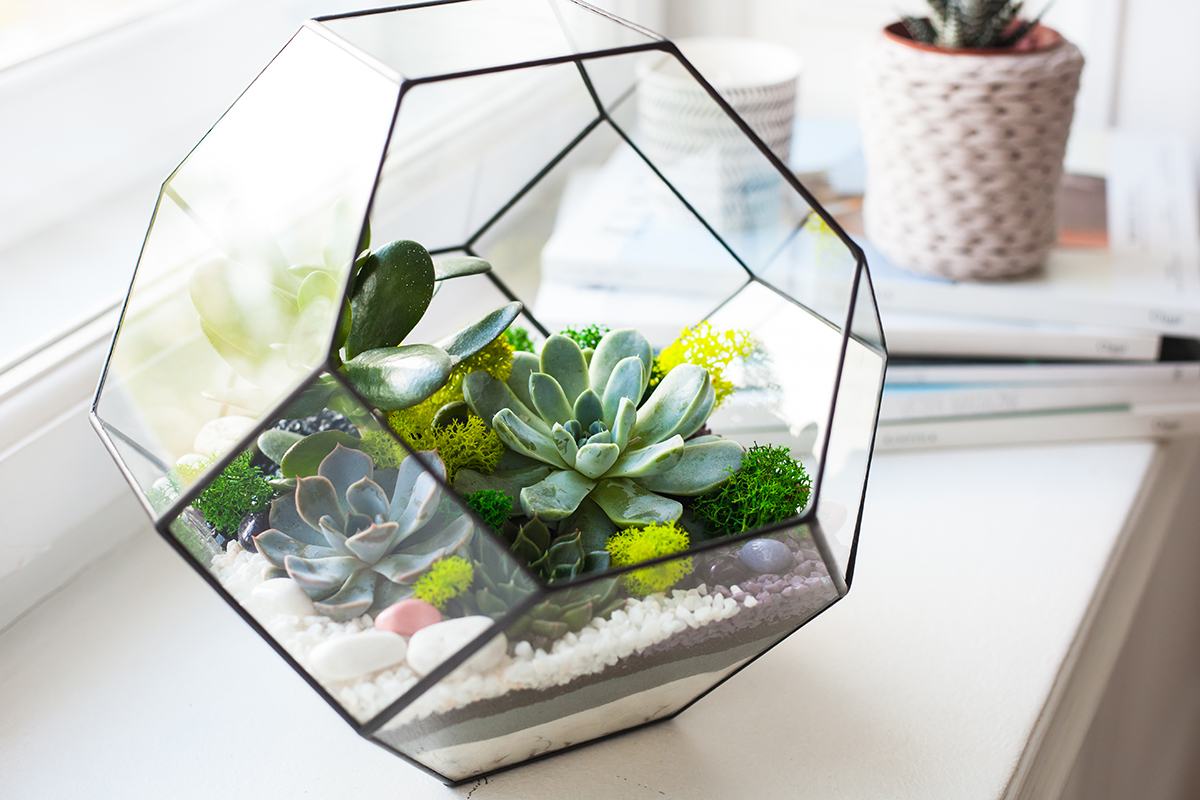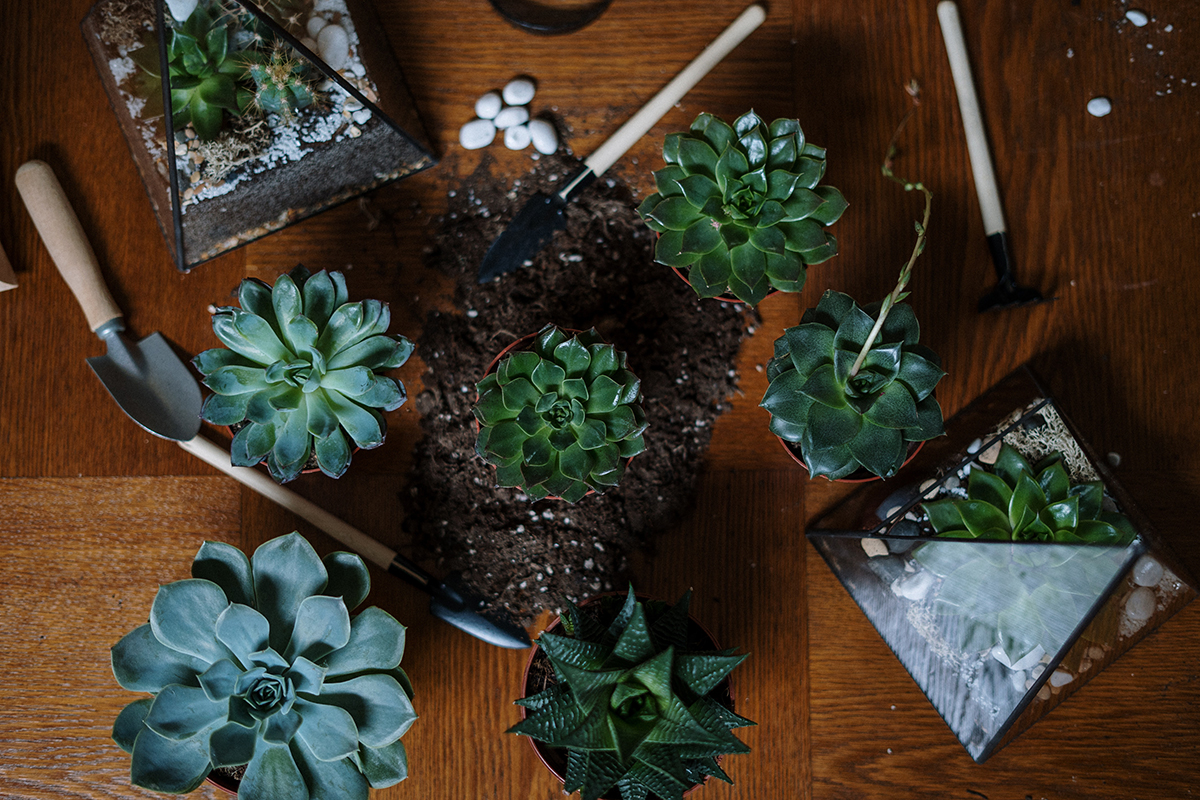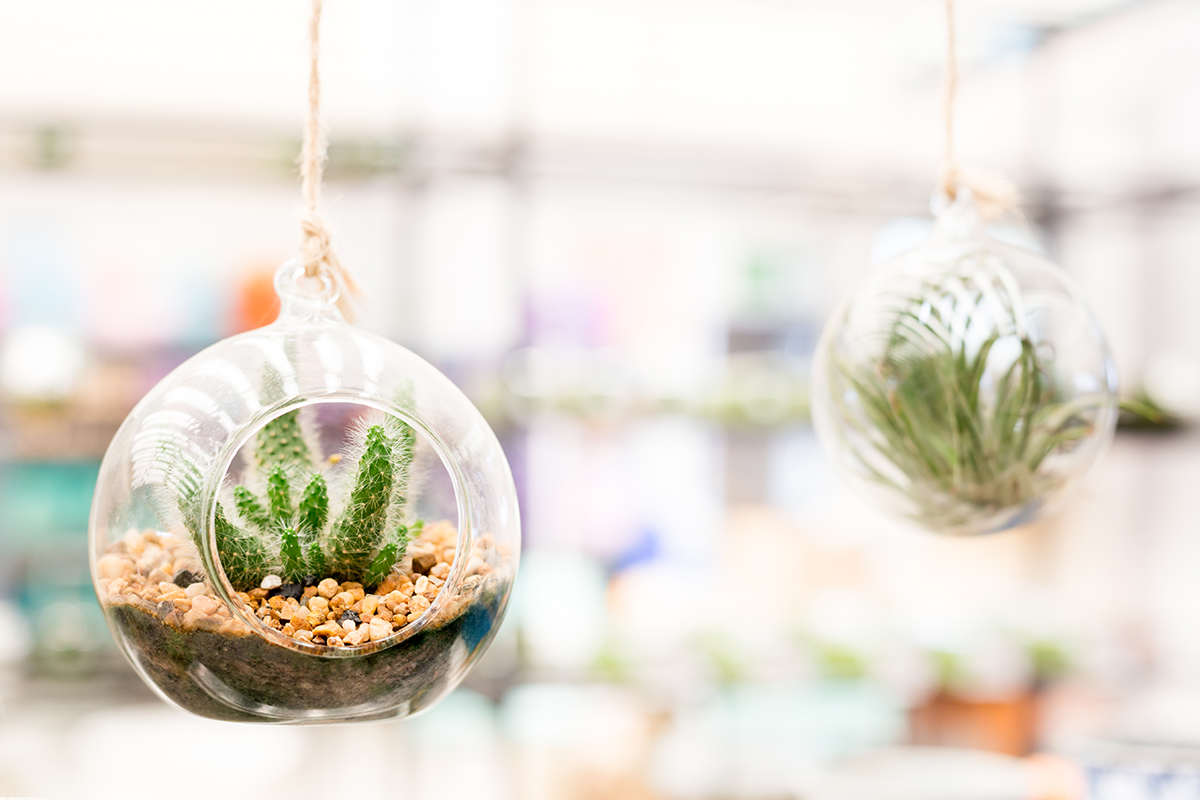Terrariums are a fun and unique way to bring a bit of the outdoors inside and add a touch of greenery to your home. Plus, they’re easy to care for and make for a great DIY project. If you’re interested in creating your own terrarium, this guide will walk you through the steps to make one of your own. All you need is a few basic supplies and some creativity to create a beautiful and thriving terrarium that will bring life to any space. So, let’s get started!
Gather your materials
Gather your materials: Before you start building your terrarium, it’s important to gather all the necessary materials. You will need a clear glass container with a lid or opening, such as a fish tank, jar, or vase. You will also need potting soil, small plants or seeds, decorative elements (such as pebbles or rocks), and possibly some charcoal and moss. You may also want to have scissors or a spoon on hand for planting and arranging. Make sure to have all your materials ready before you begin building your terrarium to make the process as smooth as possible.
Choose your container
Choose your container: The type of container you use for your terrarium will depend on your personal preference and the size and type of plants you want to use. Some popular options include fish tanks, jars, vases, and even old aquariums. Make sure to choose a container that is large enough to accommodate your plants and has an opening or lid for ventilation. If you are using a container with an opening, it should be large enough for you to easily reach in and care for your plants. If you are using a container with a lid, make sure it is not too tight fitting as this can cause the terrarium to become too humid. When choosing your container, consider the size and shape of your plants, as well as the overall aesthetic you are trying to achieve.
Select your plants
Select your plants: One of the most exciting parts of building a terrarium is choosing your plants! There are many types of plants that are well suited for terrariums, including ferns, mosses, and small succulents. When selecting your plants, consider the size of your container and the lighting conditions in your home. Some plants require bright, indirect light while others prefer lower light levels. It’s also important to choose plants that have similar care requirements to ensure that they can all thrive in the same environment. If you are using seeds, make sure to choose seeds that are suitable for terrariums and follow the instructions for planting and care. You can also consider adding decorative elements such as pebbles or rocks to add interest to your terrarium.
Prepare your soil
Prepare your soil: Once you have chosen your plants and container, it’s time to prepare the soil. You will need a potting soil specifically designed for terrariums, as it will have the proper drainage and nutrient levels for your plants. Begin by adding a layer of soil to the bottom of your container, making sure to leave enough space for your plants and decorative elements. If you are using a container with an opening, it’s a good idea to add a layer of gravel or pebbles to the bottom for drainage. This will help prevent excess water from accumulating and causing your plants to rot.
Add drainage layer
Add drainage layer: In a terrarium, it’s important to have proper drainage to prevent excess water from accumulating and causing your plants to rot. To create a drainage layer, you can add a layer of pebbles or gravel to the bottom of your container before adding the soil. This will help excess water drain away from the roots of your plants and prevent standing water. If you are using a container with an opening, you can also add a layer of mesh or screen over the drainage layer to help filter out any debris. Make sure to leave enough space between the drainage layer and the soil for your plants to root properly.
Place plants and arrange soil
Place plants and arrange soil: Now it’s time to start planting your terrarium! Begin by carefully placing your plants into the container, making sure to leave enough space between them for proper growth. Use a spoon or your fingers to carefully arrange the soil around the roots of your plants, being sure to gently press down to remove any air pockets. Once all your plants are in place, you can add any decorative elements such as pebbles or rocks to add interest and cover up any bare patches of soil. When arranging your plants and decorative elements, consider the overall aesthetic and balance of your terrarium. You want to create a cohesive and visually appealing design.
Add decorative elements
Add decorative elements: Decorative elements can add interest and personality to your terrarium and make it truly unique. There are many options to choose from, such as rocks, pebbles, moss, and miniature figurines. When selecting your decorative elements, consider the size and scale of your terrarium as well as the overall aesthetic you are trying to achieve. Be sure to place your decorative elements in a way that complements your plants and doesn’t overcrowd the container. You can also use decorative elements to add height and depth to your terrarium, creating visual interest and depth. When adding decorative elements, less is often more, so be sure to use them sparingly to avoid overwhelming your terrarium.
Water and maintain your terrarium
Water and maintain your terrarium: Caring for your terrarium is relatively easy, but it’s important to pay attention to the needs of your specific plants. In general, you should water your terrarium every 1-2 weeks, depending on the size and type of plants you are using. Avoid over-watering, as this can cause your plants to rot and create a breeding ground for pests. To water your terrarium, use a watering can or small watering bottle to gently pour water over the soil, being careful not to disturb the plants or decorative elements. Make sure to water the soil, not the plants themselves, as the leaves can become waterlogged and rot. It’s also a good idea to occasionally mist the plants to increase humidity, especially if you are using a container with a lid. Be sure to monitor your terrarium regularly and make any necessary adjustments to ensure that your plants are thriving.
Troubleshooting common issues
Troubleshooting common issues: While terrariums are generally easy to care for, there are a few common issues that you may encounter. One common issue is over-watering, which can cause your plants to rot and create a breeding ground for pests. To prevent over-watering, make sure to water your terrarium every 1-2 weeks, depending on the size and type of plants you are using. Another common issue is under-watering, which can cause your plants to wilt and die. To prevent under-watering, make sure to pay attention to the moisture levels in your soil and water your terrarium when needed. Other issues that may arise include pests, such as aphids or mealybugs, and fungal infections, such as powdery mildew. To prevent pests and infections, make sure to carefully monitor your terrarium and take any necessary precautions, such as using organic pest control methods or removing infected plants.
Enjoy your new terrarium!
Enjoy your new terrarium! Once you have finished building your terrarium, it’s time to sit back and enjoy your beautiful creation. A well-cared for terrarium can thrive for years, providing a unique and low-maintenance way to bring a bit of nature into your home. Be sure to continue to care for your terrarium by watering and maintaining it regularly, and make any necessary adjustments to ensure that your plants are thriving. You can also consider changing up the plants and decorative elements in your terrarium to keep things fresh and interesting. With a little bit of care and attention, your terrarium will become a beloved and thriving addition to your home.




